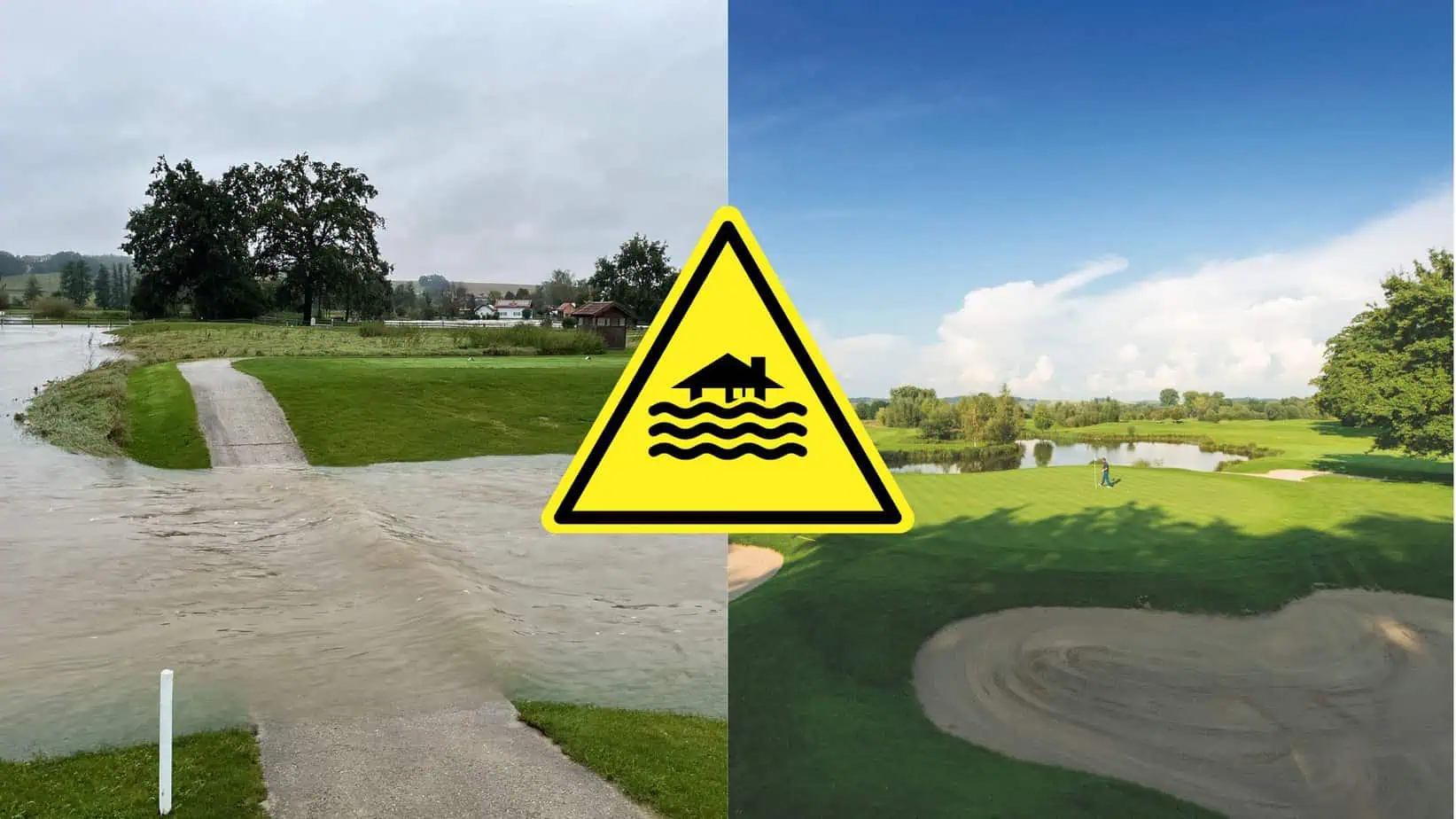The big clean-up after the flood
The flood situation in south-east Germany has calmed down – but for Florian Gerleigner, head greenkeeper of the golf courses at the Quellness Resort in Bad Griesbach, the big clean-up has begun. One of the largest golf resorts in Europe with five golf courses has been struggling with heavy rain and its consequences since September 15.
Rott flooding area
Gerleigner recorded 186 litres of rain per square meter during the extreme weather. The result: both the low-lying Beckenbauer and the Porsche Golf Course were underwater, the greens sank into the water, and the courses were closed for several days. Most golfers don’t realize that flooding is unavoidable for the golf resort, as the area of the two golf courses was already designated as a flood zone of the river during the approval phase. In the event of extreme flooding, the area is therefore used as an overflow basin and thus protects neighbouring villages from worse damage caused by flooding.
“That’s another reason why we planned for raised greens and fairways when we designed the golf course,” explains Gerleigner. However, in the event of heavy flooding, such as in 2016 or now in September, even the already raised greens are too low. The situation is different at GC Gäuboden, which is also located in the Bavarian region hit by heavy rainfall and also has raised greens for floods. “We weren’t affected this time,” says Florian Erhardsberger, CEO of the golf course. “The Danube is two kilometres away, and the water drains away extremely well from our loess soil.” At GC Bad Füssing, where the Kößlarner stream overflowed its banks, many areas of the course were also flooded.
Significant extra work on the course
The consequential damage is enormous. While the sun was shining brightly in Bad Griesbach at the weekend after the storm, Gerleigner and the greenkeeping team were working on the damage.
The head greenkeeper estimates the additional work to be one week of extra work for 14 to 15 men. Plus, there will be at least two weeks of work on the bunkers as the drainage channels are silted up. In the meantime, the greens have been hosed down several times to remove the mud and all the fairways have also been treated accordingly. The damage to the course always depends massively on the nature of the flood. “In 2016, the water was relatively clear when there was damage but very muddy the next time it flooded. This time we had light mud, it’s not quite as bad as in 2016.”
The golf course helps with flood protection
Communication with the golfer is often the problem: “During rainfall, there is an understanding that the course is closed,” summarizes the head greenkeeper. It becomes more difficult when the sun is shining, the water has already run off the fairways, and the golfer thinks the course is fine again. For example, some players don’t want to understand that the fairways can’t be mowed again immediately.
The two golf courses’ good purpose as a flooding area to protect people, houses, or farms also becomes a burden for the golf course: after all, over a longer period of time, there is less income from green fees, more costs for materials and working hours, and, on top of that, perhaps one or two dissatisfied members.
This conflict can hardly be resolved: after all, the use as a flood basin was part of the planning permission. In the end, golfers and operators will probably only have to change their perspective: The Beckenbauer and the Porsche Course play an essential role in flood protection for the entire population. A conclusion that is certainly positive.







